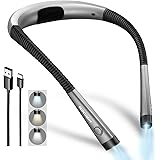This radioactive gas is a leading cause of lung cancer. Here’s how to check if it’s in your home

Radon is a radioactive gas found in nearly every Canadian home. A new research study is putting a renewed spotlight on the invisible, odourless element that is the second-leading cause of lung cancer in Canada.
Researchers from the University of Calgary compiled radon readings from 75,000 urban and rural residential buildings. The countrywide study found that an estimated 10.3 million Canadians live in homes with levels above Health Canada’s guidelines.
There are multiple ways to combat Radon in your home. Tests are available for purchase through Canada’s government portal. You can also hire a professional to survey your home. If your levels are high, radon reduction strategies are recommended. This includes having a system installed in your home that pulls the radioactive gas out of your house.
Radon forms naturally when radioactive metals break down in rocks, soil and groundwater. Exposure comes from breathing in the gas that leaks through the cracks and gaps in our homes.
When high levels of radon are inhaled, “it increases the risk of developing lung cancer by causing DNA damage at the cellular level,” said oncologist Dr. Doreen Azeife.
Azeife also pointed out that “the data shows that up to 40 per cent of lung cancers are not smoking related.”
The last radon report was released in Canada more than a decade ago. In 2012, about seven per cent of homes had Radon readings above Health Canada’s guidelines. This year, that percentage spiked to 17.8 per cent.
The study’s lead researcher, Dr. Aaron Goodarzi, has a hypothesis for why we’re seeing a rise in radon levels in homes across Canada.
“What has changed is how we’ve been building on top of the ground: retrofitting existing properties to make them more airtight, but without necessarily balancing the amount of fresh air the home can intake and the stale air that is released.”
Dr. Goodarzi added that, “if you don’t balance (the intake and outtake of air) correctly, the house will balance that out by sucking on the ground” where radon is found.
Dr. Goodarzi adds that more homes in rural communities were found to have high radon levels, about one-in-four, as opposed to those in cities. In the City of Calgary, for example, he says about one-in-six homes were found to have levels of radon above what has been deemed safe by Health Canada.
View original article here Source









